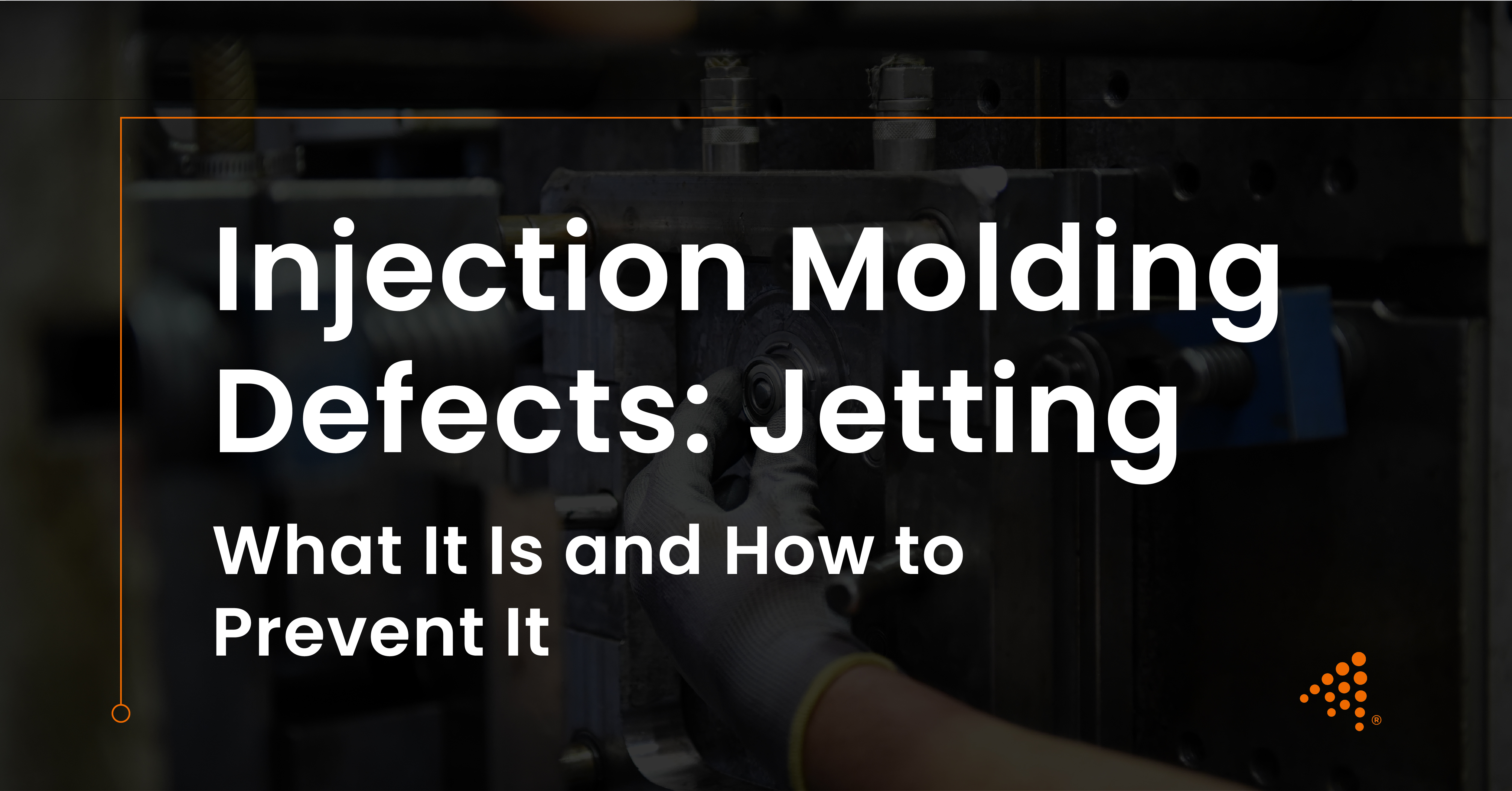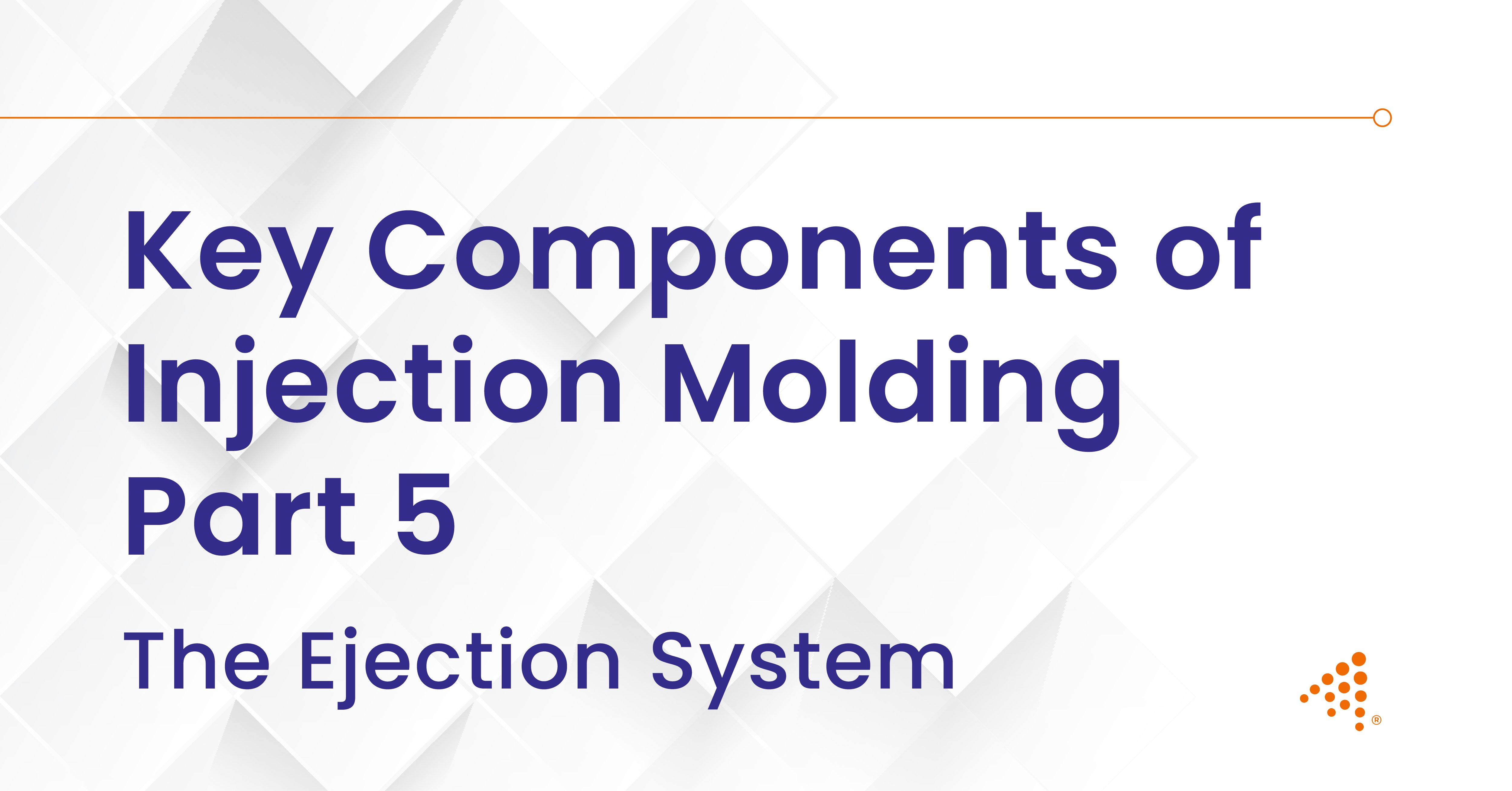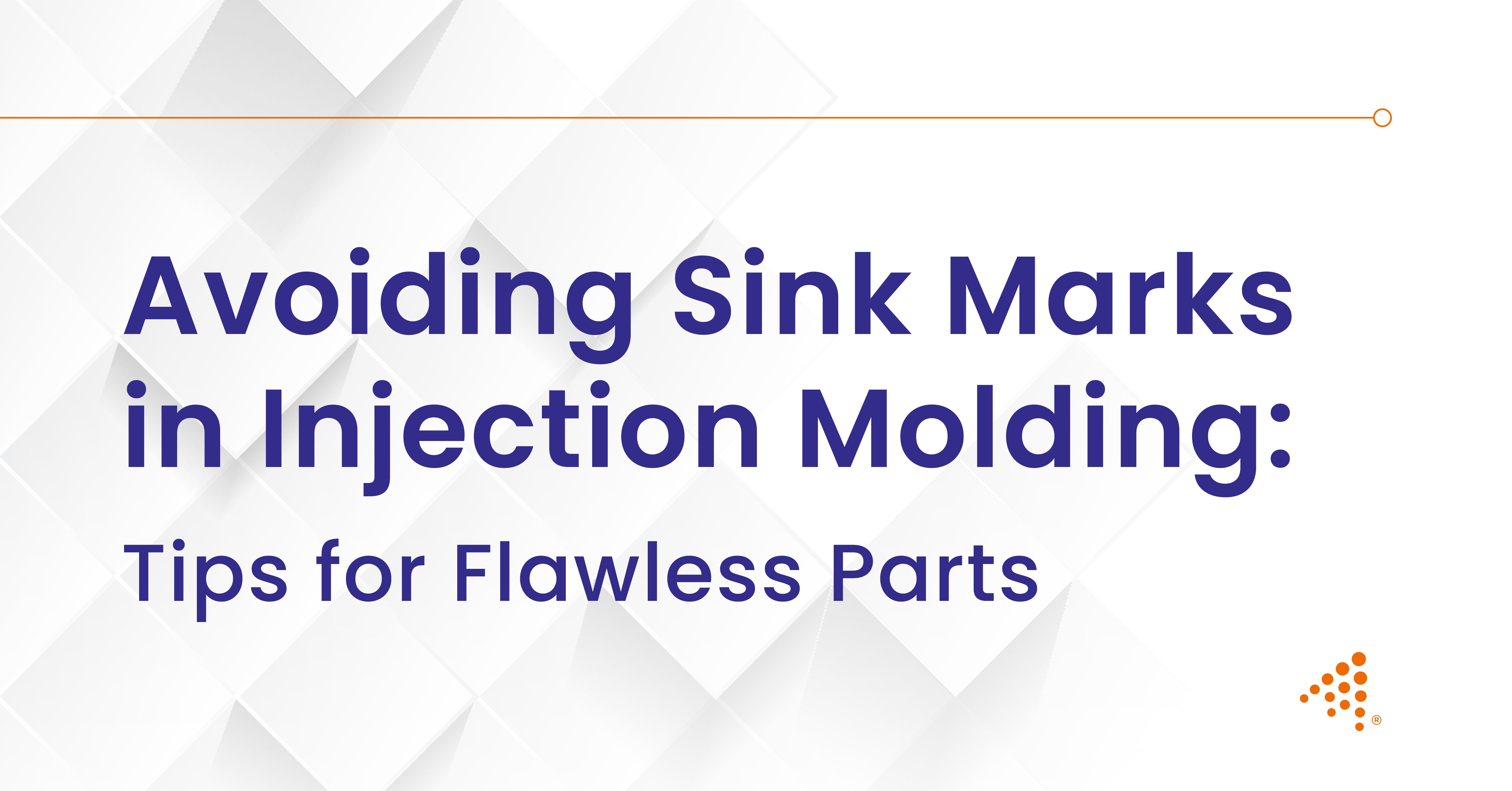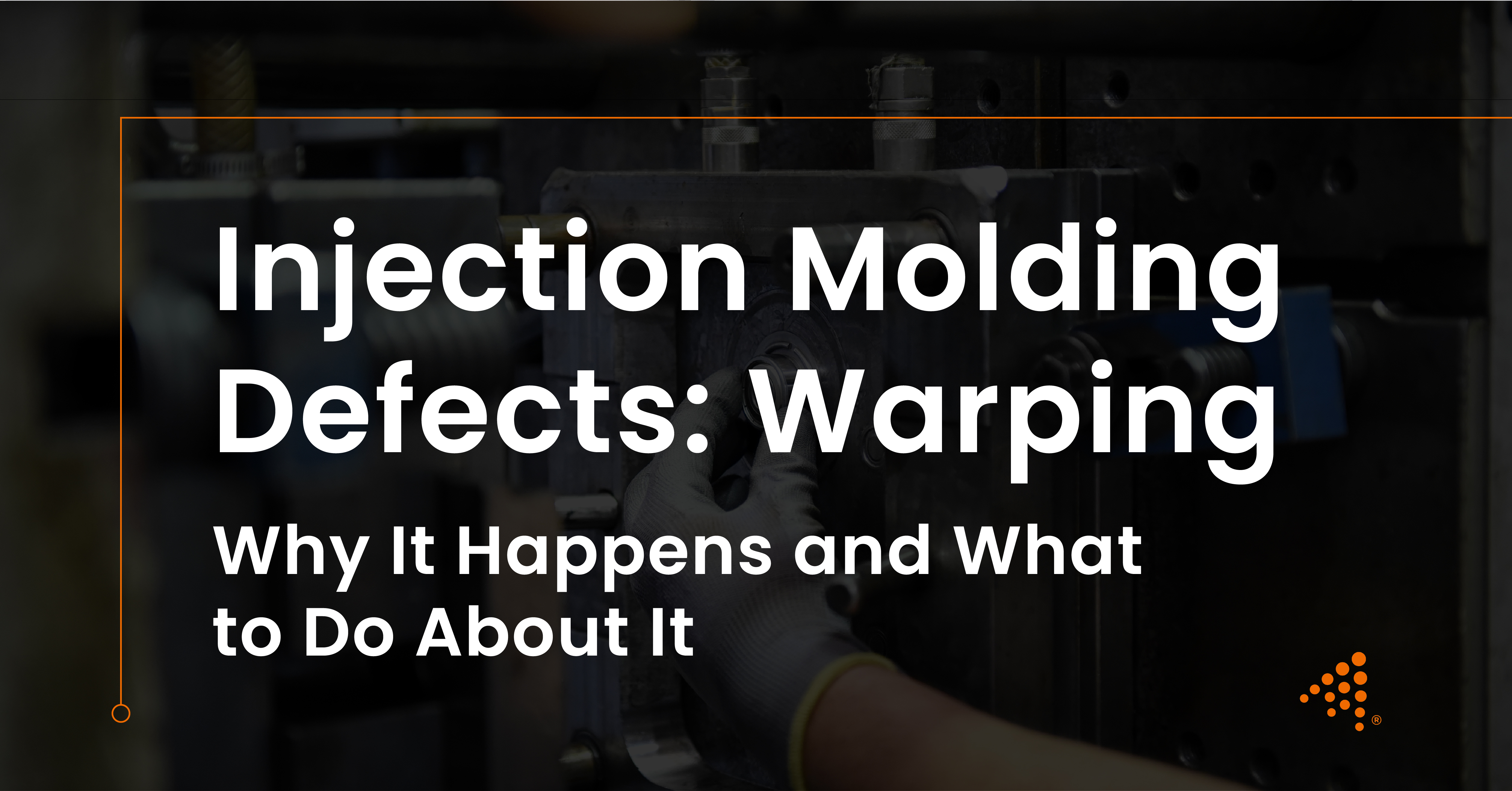7 min read
Key Components of Injection Molding Part 5: Ejection System
The injection molding process is a symphony of precisely orchestrated stages, each playing a vital role in transforming raw plastic material into a...
5 min read
Nick Erickson : Aug 26, 2025 9:31:00 AM

In precision injection molding, certain defects can manifest during the process, with one of the more notable being "jetting." While it may appear as a simple surface blemish, jetting can signal significant issues within the molding process or tool design. For many industries, jetting can affect both the strength and appearance of a part. Solving it is vital to maintaining many things — production standards, reduce material waste, ensure consistent, reliable components. Keep reading to learn what jetting is, why it happens, and how to keep it from not only happening again, but affecting your parts.
Read More About Choosing the Best Surface Finish for Injection Molded Parts
Jetting is a type of defect that appears as a serpentine or squiggly line on the surface of a molded part, typically originating from the injection gate. It happens when a stream of molten plastic is injected at a high velocity into the mold cavity without making contact with the mold walls. Instead of the material flowing evenly and filling the cavity from the outside in, it shoots straight through the open space.
This initial "jet" of material begins to cool and solidify before the rest of the cavity is filled. As subsequent molten plastic fills the mold, it flows around this solidified jet, resulting in poor fusion between the initial and later material. The presence of jetting is a clear indication that the flow of molten plastic is uncontrolled, which can lead to weakened, aesthetically flawed, and functionally unreliable parts.
Struggling with jetting or flow defects?
Partner with Aprios for expert-led plastic injection molding services and mold optimization.
Jetting usually comes down to a few main factors — most often the mold design and the processing settings used during injection. Pinpointing the specific cause is the first step toward implementing a successful and lasting solution.
The design of the injection mold is a critical factor. The most significant cause of jetting is related to the gate's location and size. A gate is the opening through which the molten plastic enters the final part cavity. If the gate is positioned in a way that the material flows directly into a wide, open area without obstruction, jetting is likely to occur. The material needs to impinge on a mold wall or a core feature immediately upon entering the cavity to stop the jetting effect and promote a uniform flow front.
Furthermore, a gate that is too small for the part's wall thickness can cause the material to be injected at an excessively high velocity, much like water being forced through a narrow nozzle. This high-speed injection leads directly to the jetting phenomenon. Abrupt changes in wall thickness within the part design can also disrupt the flow of material and cause jetting.
That’s why Design for Injection Molding (DfIM) and Plastic Part Design Optimization play a foundational role in preventing such flow-related defects early in the design for manufacturing services stage.
Even a well-designed mold can still produce jetting if the processing settings aren’t dialed in correctly.
The most common cause is excessive injection speed. When material enters the cavity too fast, it shoots ahead as a jet instead of flowing evenly. Melt and mold temperatures also play major roles. If the melt temperature is too low, the plastic thickens, raising pressure and velocity — both of which can trigger jetting. On the other hand, when the mold temperature is set too low, the first layer cools too quickly and won’t bond properly with the material that follows.
Read More About Key Factors for Selecting the Best Injection Molding Tooling Supplier
Addressing a jetting problem involves a methodical approach that starts with the most straightforward potential solutions and progresses to more involved adjustments. The fix almost always involves modifying the mold design or optimizing the injection molding services.
Since gate design and location are primary contributors, the first area to evaluate is the mold itself. The most effective solution is to reposition the gate so that the incoming molten plastic immediately hits a wall or pin within the cavity. This obstructs the free jet and forces the material to spread out in a more controlled, uniform manner.
If moving the gate isn’t an option, increasing its size can help. A larger gate lowers injection speed while keeping the same fill time, allowing the material to flow more smoothly and reducing jetting. Keeping wall thickness consistent also helps the cavity fill evenly.
When the mold design checks out, the next step is to fine-tune the molding setup itself. A few changes usually solve the problem:
At a design and manufacturing company like Aprios, we combine injection molding quality control with custom injection molding solutions to ensure every part meets functional and aesthetic specifications. From Medical Device Prototypes to additive manufacturing solutions, process optimization is integrated at every stage.
Finding injection molding defects starts with checking surface texture, flow lines, and overall part accuracy. Jetting, burn marks, warping, and sink marks are common indicators of unstable processing or poor mold design. Troubleshooting starts with isolating variables — mold temperature, material viscosity, or injection speed — and adjusting one at a time. Looking at gate placement and part geometry helps confirm if the issue comes from tooling or processing. At Aprios, we use validation testing, sensor feedback, and material checks to find problems fast, so teams can fix them early and keep production consistent.
Explore our precision tooling services and prototyping capabilities to eliminate jetting in your first production run.
Jetting is more than a superficial flaw; it is a sign that the molding process is not stable or controlled. If not corrected, it can result in parts with significant structural weaknesses, dimensional inaccuracies, and increased production costs due to scrap. A properly designed mold combined with meticulously optimized processing parameters is the key to producing parts consistently and accurately, free from defects. Stopping jetting starts with knowing how the material moves, how the mold is built, and how each process setting affects the final part.
At Aprios, that knowledge comes from experience — we use it every day to produce precise, dependable parts for critical applications.
Jetting is a defect that appears as squiggly or snake-like lines on the surface of a molded part. It occurs when molten plastic shoots into the cavity too quickly and cools before fusing evenly.
Defects often result from improper mold design, inconsistent temperatures, or incorrect injection speeds. Variations in gate size, wall thickness, or cooling rate can also disrupt flow patterns and cause visual or structural flaws in the finished part.
Typical injection molding issues include jetting, flash, warping, sink marks, short shots, and flow lines. Each of these defect points to a specific, different imbalance in temperature, pressure, or even mold design within the production process.
Slowing injection speed, increasing melt or mold temperature, or adjusting gate placement can all help stop jetting. The goal is smooth, controlled flow and proper cooling for strong, uniform parts.
Most defects come down to design or process balance. We adjust gate setup, fill speed, and temperature control until the part runs clean. Regular checks keep production stable and parts within spec.

7 min read
The injection molding process is a symphony of precisely orchestrated stages, each playing a vital role in transforming raw plastic material into a...

In high-precision injection molding, achieving a flawless surface finish is often as important as meeting tight dimensional tolerances. One of the...

Dimensional accuracy is essential in the field of precision injection molding. However, even when a part is molded to exact specifications, it can...